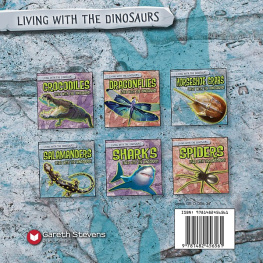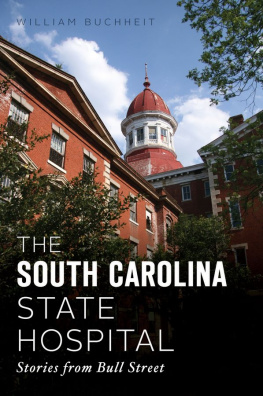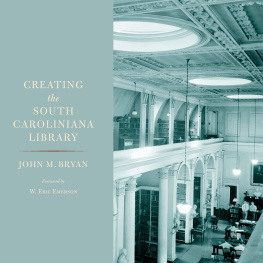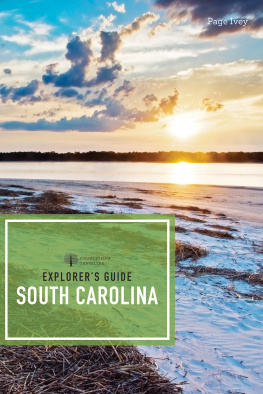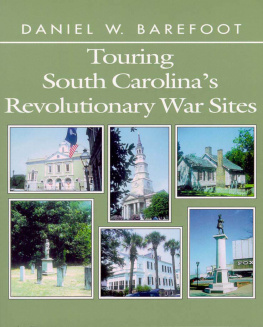Elizabeth Cassidy West - On the Horseshoe: A Guide to the Historic Campus of the University of South Carolina
Here you can read online Elizabeth Cassidy West - On the Horseshoe: A Guide to the Historic Campus of the University of South Carolina full text of the book (entire story) in english for free. Download pdf and epub, get meaning, cover and reviews about this ebook. City: Columbia, year: 2015, publisher: University of South Carolina Press, genre: Detective and thriller. Description of the work, (preface) as well as reviews are available. Best literature library LitArk.com created for fans of good reading and offers a wide selection of genres:
Romance novel
Science fiction
Adventure
Detective
Science
History
Home and family
Prose
Art
Politics
Computer
Non-fiction
Religion
Business
Children
Humor
Choose a favorite category and find really read worthwhile books. Enjoy immersion in the world of imagination, feel the emotions of the characters or learn something new for yourself, make an fascinating discovery.

- Book:On the Horseshoe: A Guide to the Historic Campus of the University of South Carolina
- Author:
- Publisher:University of South Carolina Press
- Genre:
- Year:2015
- City:Columbia
- Rating:5 / 5
- Favourites:Add to favourites
- Your mark:
On the Horseshoe: A Guide to the Historic Campus of the University of South Carolina: summary, description and annotation
We offer to read an annotation, description, summary or preface (depends on what the author of the book "On the Horseshoe: A Guide to the Historic Campus of the University of South Carolina" wrote himself). If you haven't found the necessary information about the book — write in the comments, we will try to find it.
Founded in 1801 as South Carolina College, the University of South Carolina is one of the nations oldest public colleges. Located in the heart of downtown Columbia and bound by Sumter, Pendleton, Bull, and Greene Streets, this historic landscape, known today as the Horseshoe, has both endured and prospered through more than two centuries of South Carolinas often-turbulent history.
In On the Horseshoe: A Guide to the Historic Campus of the University of South Carolina, Elizabeth Cassidy West and Katharine Thompson Allen offer a comprehensive, up-to-date overview of the historic Horseshoe. So much more than just a walking tour of Carolinas historic original campus, On the Horseshoe features a wealth of archival photographs and drawings dating back to the nineteenth century and also provides a close look at the Horseshoes structures as well as the men and women who lived, worked, and studied in them.
A numbered map with corresponding descriptions locates more than two dozen structures on the original campus and includes the history of each one, the important events that took place there, and its current use. An accompanying Web site (www.sc.edu/horseshoe) provides additional information and images for those who wish to further their knowledge of the universitys history. Walter Edgar, Neuffer Professor of Southern Studies Emeritus and Distinguished Professor Emeritus of History at USC, provides a foreword.
Whether a native of Columbia, a South Carolina alumnus or a visitor to the Palmetto State, On the Horseshoe is a must-read for those interested in one of the most storied and historic facets of South Carolinas capital city. John M. Sherrer III, Historic Columbia Foundation
Allen and West offer a well-researched and beautifully written narrative that highlights the physical and social histories of the campus. They seamlessly chronicle the construction of buildings, institutional traditions, the Civil War, slavery, Jim Crow, the civil rights movement, influential people, and ongoing memorialization efforts that showcase the rich and complex history of the university. This is an essential book for anyone interested in the University of South Carolina history, or southern history as a whole. Kelley Deetz, Presidents Commission on Slavery and the University, University of Virginia
Elizabeth Cassidy West: author's other books
Who wrote On the Horseshoe: A Guide to the Historic Campus of the University of South Carolina? Find out the surname, the name of the author of the book and a list of all author's works by series.

